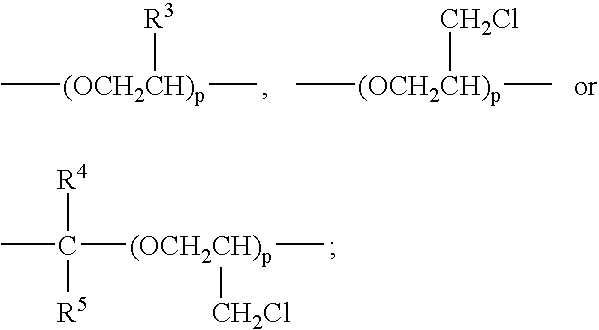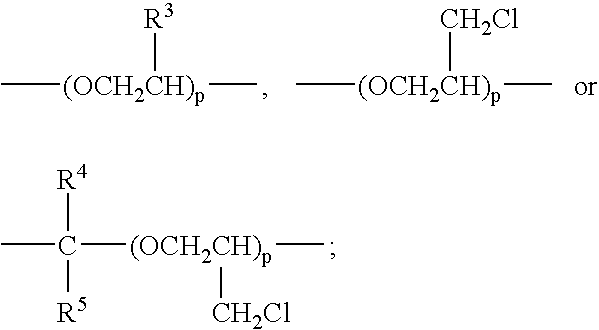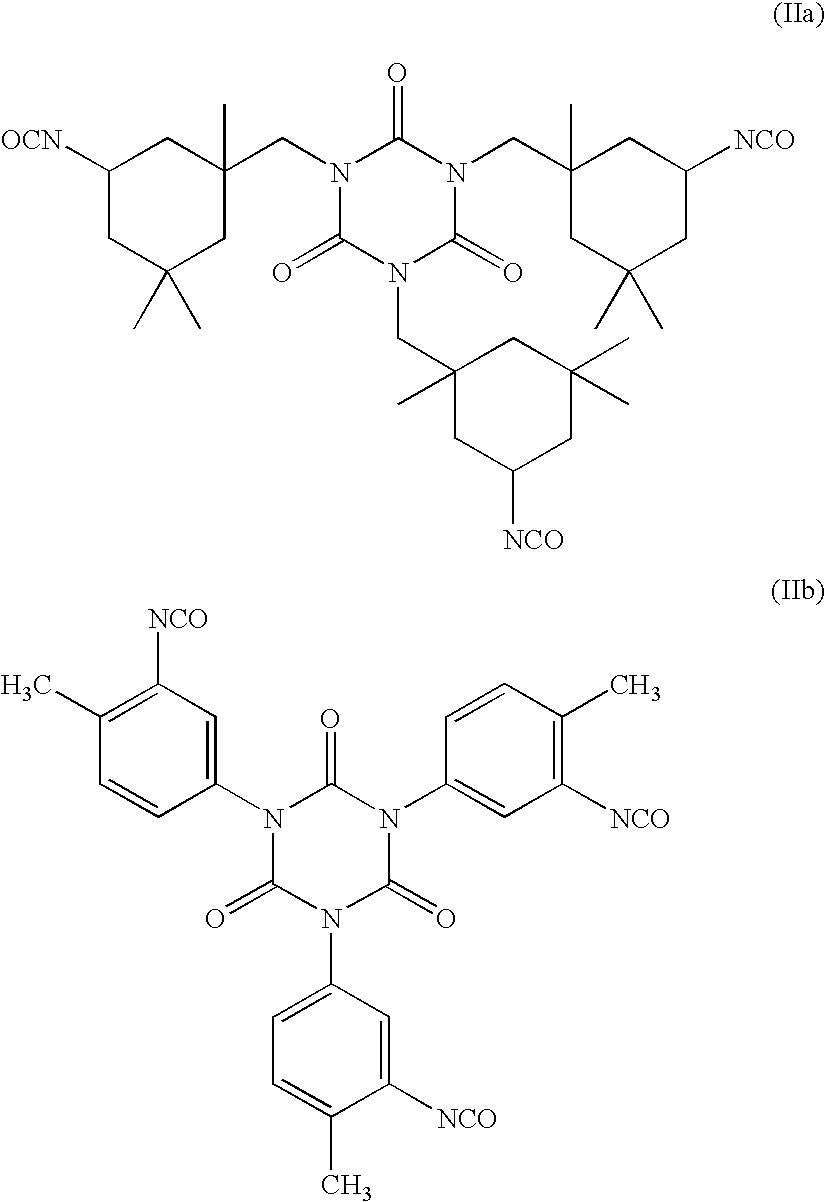Perfluoroether based polymers
a technology of perfluoroether and polymer, which is applied in the field of polyfluorinated compounds, can solve the problems that the short-chain perfluoroalkyls have traditionally not been successful commercially in imparting surface effects to substrates
- Summary
- Abstract
- Description
- Claims
- Application Information
AI Technical Summary
Benefits of technology
Problems solved by technology
Method used
Image
Examples
example 1
[0114]C3F7OCF2CF2I (100 g, 0.24 mol) and benzoyl peroxide (3 g) were charged to a pressure vessel under nitrogen. A series of three vacuum / nitrogen gas sequences was then executed at −50° C. and ethylene (18 g, 0.64 mol) was introduced. The vessel was heated for 24 hour at 110° C. The autoclave was cooled to 0° C. and opened after degassing. Then the product was collected in a bottle. The product was distilled giving 80 g of C3F7OCF2CF2CH2CH2I in 80% yield. The boiling point was 56˜60° C. at 25 mm Hg (3333 Pa).
[0115]A mixture of C3F7OCF2CF2CH2CH2I (300 g, 0.68 mol) and N-methyl-formamide (300 mL), was heated to 150° C. for 26 h. Then the reaction was cooled to 100° C., followed by the addition of water to separate the crude ester. Ethyl alcohol (77 mL) and p-toluene sulfonic acid (2.59 g) were added to the crude ester, and the reaction was stirred at 70° C. for 15 minutes. Then ethyl formate and ethyl alcohol were distilled out to give a crude product. The crude product was dissolve...
example 2
[0118]The sample was prepared using the method described for Example 1, except that the hot product (20.0 g) was added to a hot surfactant solution (70° C., 20 g deionized water, 0.32 g MERPOL SE and 1.46 g ARQUAD 16-50 surfactants). The solution was homogenized using a digital sonifier for 5 minutes and MIBK was removed via vacuum distillation to yield a stable dispersion of urethane polymer (15.5% solids, 5.51% F).
[0119]The dispersion was applied to carpet as described above under “Materials”. The carpets were tested for water repellency by Test Method 1 and for oil repellency by Test Method 2. Results are listed in Table 6.
example 3
[0120]To a 3-neck 250 mL round-bottom flask, equipped with a reflux condenser with a nitrogen inlet, a magnetic stirrer, and a temperature probe, was added C3F7OCF2CF2CH2CH2OH alcohol prepared as in Example 1 (24.65 g, 74.67 mmol) that was dried over sodium sulfate, and DESMODUR N3300 (17.98 g, 93.34 mmol (NCO)) in 11 g MIBK. The mixture was heated to 65° C. To the solution, dibutyl tin dilaurate (2.4 g of 0.4 wt % catalyst in MIBK) was added dropwise resulting in an exotherm of 30° C. The reaction was held at 84° C. for 3 h. MIBK (34.40 g) and water (0.27 g) were added dropwise to the reaction followed by heating for 24 h at 84° C. Additional water 0.27 g was added and the reaction was heated until isocyanate was no longer detected. The hot product (40.0 g) was added to a hot surfactant solution (70° C., 65 g deionized water and 3.09 g Witco C6094 surfactant). The solution was homogenized using a digital sonifier for 5 min and MIBK was removed via vacuum distillation to yield a sta...
PUM
| Property | Measurement | Unit |
|---|---|---|
| mol % | aaaaa | aaaaa |
| temperature | aaaaa | aaaaa |
| time | aaaaa | aaaaa |
Abstract
Description
Claims
Application Information
 Login to View More
Login to View More - R&D
- Intellectual Property
- Life Sciences
- Materials
- Tech Scout
- Unparalleled Data Quality
- Higher Quality Content
- 60% Fewer Hallucinations
Browse by: Latest US Patents, China's latest patents, Technical Efficacy Thesaurus, Application Domain, Technology Topic, Popular Technical Reports.
© 2025 PatSnap. All rights reserved.Legal|Privacy policy|Modern Slavery Act Transparency Statement|Sitemap|About US| Contact US: help@patsnap.com



